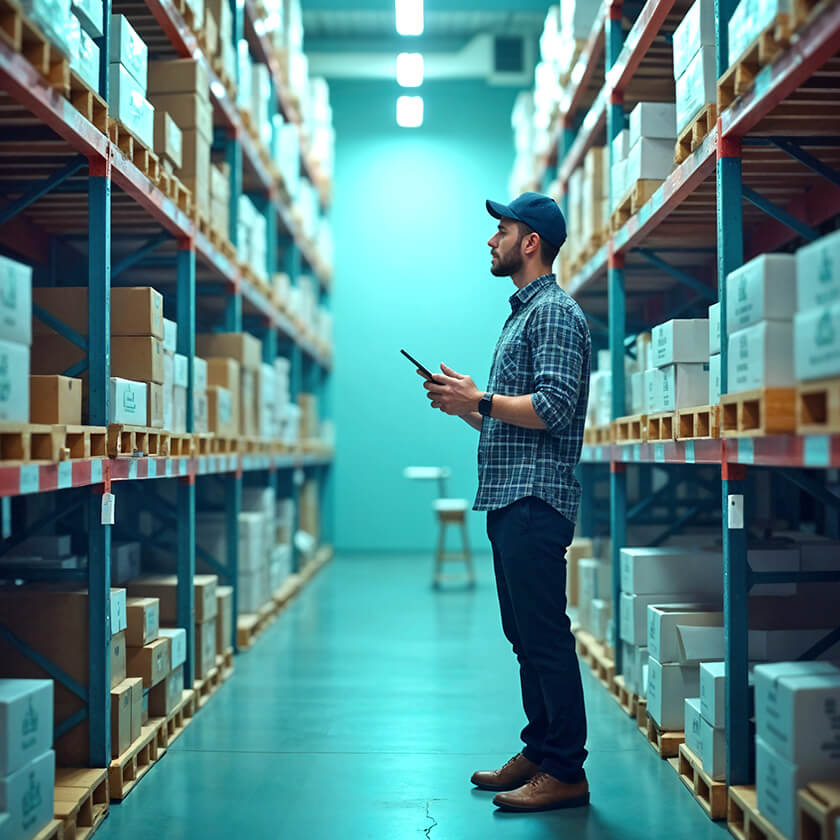No product, no revenue. According to NielsenIQ survey, companies lose up to 46% of possible sales due to lack of products on the shelves. When confronted with empty shelves, 20% of consumers postponed their purchase, 10% of consumers purchased the item elsewhere, and 16% of consumers shifted to an online source. Empty shelves ultimately result in financial and reputational losses. But what causes empty shelf space and how can it be avoided?
Table of Сontents
Why shelves become empty and what is the solution?

There are many reasons why goods are not available on the shelves. They can be divided into two types:
- the item is neither available in stock nor on the shelf
- the item is available in stock, but it is not displayed on the shelf.
In the first instance, the lack of goods is due to inaccurate calculations of the required stock level or demand forecasts, problems in the supply chain, or non-availability of goods from the supplier.
In the second case, it is the workload of employees and the human factor. Employees in the sales area have many tasks: displaying goods, correcting the layout, checking expiration dates and price labels, packing goods if necessary, and many others. There is not enough time for all the tasks. And there is no opportunity to continuously go around all the shelves to check the availability of goods.
To monitor the availability of goods, some companies have already started using dedicated solutions that send employees a notification if the product is out of stock.
It works as follows: Computer vision is built into the surveillance cameras. It recognizes gaps on the shelves and lets the right employees know that the goods need to be displayed. This approach helps automate the process, collect and accumulate analytics on demand fluctuations over the required period of time. The information will be accurate, relevant and complete. This data will help in the future to track swings in demand and purchase the required volumes of goods.
In Spain, computer vision monitors products on cafe display cases: details

Computer vision monitors products on cafe display cases
AVS Services offers video surveillance services to retail chains and catering companies. It is important for AVS Services clients to monitor the availability of goods on display cases, as they handle ready-made food products. Employees need to serve customers, and there is no time left to monitor gaps and replenish the display case.
AVS Services offered their clients to automatically detect non-available goods on display cases. For this, the Goods Checker service was used, which recognizes goods on shelves using computer vision. Now Goods Checker monitors empty spaces on display cases throughout the day. Neural networks detect gaps in the display even without knowing what products are on the shelves.
The data is processed and displayed in dashboards for managers. A messenger bot has also been developed that sends notifications to employees about the need to replenish goods.
Following the pilot project, AVS Services clients got a solution that continuously monitors the occupancy of display cases and employee performance. Goods Checker helped to determine the most often time period and categories of out-of-shelf products.
When used to its full potential, Goods Checker will help ensure product availability on display, enable increased sales, manage inventory levels, and reduce food spoilage.
Click to read the full success story
Technologies Not to Be Ignored Longer

Computer vision and artificial intelligence are integrated into many business processes
Computer vision and artificial intelligence are integrated into many business processes. Merchandising is not left out. These technologies tirelessly recognize products on shelves, identify empty spaces and even analyze customer behavior. Companies can obtain a comprehensive, timely and reliable picture of what is happening on store shelves.
These solutions allow for better efficiency of inventory management, product shortage prevention, optimized product mix and display, demand forecasting and better procurement planning.
Implementation of intelligent shelf monitoring systems provides improved service quality, increased sales and reduced costs. This turns to be a key competitive gain for retailers in a highly competitive environment.




